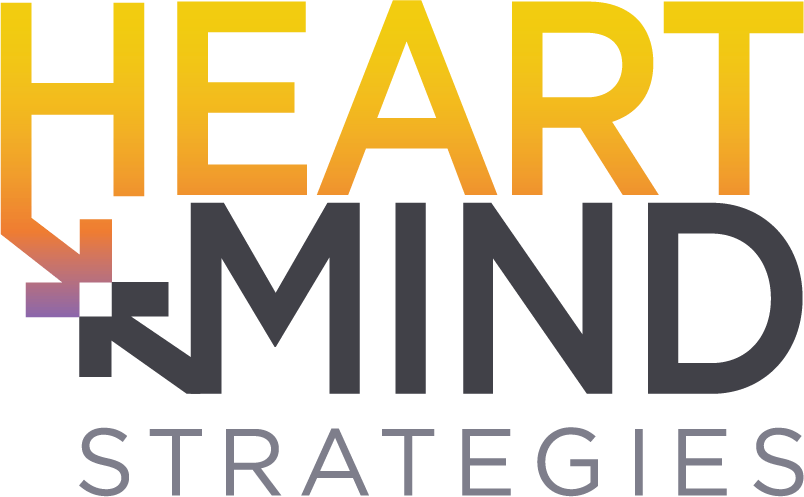Financial services can seem intimidating and inaccessible, especially for those who are not financially literate. A report from the National Financial Educators Council shows that 38% of individuals in a recent survey said their lack of financial literacy cost them at least $500 in 2022, including 15% who said it set them back by $10,000 or more.
While many parents start teaching their kids money management at a young age, by using a piggy bank or giving allowances to help with budgeting, 82% of parents believe that children should be taught financial literacy and money management skills in schools — a new program at Camelback High School in Phoenix will do just that, aiming to improve financial decision-making for students through financial literacy. If children don’t learn the value of a dollar — and money topics like saving, investing, budgeting, and interest rates — their ability to manage money might suffer in adulthood, especially since most young adults face important financial decisions like how to pay for college, managing a credit card, or paying taxes.
The need for financial services in the U.S. is growing exponentially, impacted by persistent economic stress, upcoming generational wealth transfer, and demographic shifts among Gen Z, the first majority multi-cultural generation in the country. Yet the financial industry struggles to consistently deliver a service that feels personalized, transparent, and human-centric. This disparate connection impacts client loyalty, recruitment for financial firms, and overall industry perception. How can we bridge the gap between the financial industry and its clients?
In our Heart+Mind Connections series roundtable this month, we met with leading industry experts Kevin Keller, CEO at CFP Board, Kamila Elliott, CEO and Founder of Collective Wealth Partners, and Martin Booker, Program Manager at AARP. We explored efforts to humanize financial services and personal money management: how to foster trust and accessibility using marketing and communication strategies, how to leverage AI to enhance customization, and how firms can attract and retain a workforce that aligns with the needs of financial confidence and security.
With these tools, insights, and strategies, financial services firms can chart a course toward a more empathetic, transparent, and human-centric future in marketing, communications, and client experience.
Putting the Human in Personal Money Management
It’s clear that values and emotions greatly influence our financial choices. Different upbringings, emotional barriers, and changing values can all impact our perception of money and financial goals. Because financial decisions are a deeply personal matter, the human connection in financial services is very important. Keller pointed out that this makes human engagement and understanding critical to serving a client’s best interest.
“The first meeting we have with our clients, we don’t talk about money,” Elliott explained. “We talk about your goals. We have an envisioning session with every client about what you’re trying to accomplish. You want to retire, talk about retirement with us. What kind of retirement do you want to have? We talk about your family and your family structure. We talk about your values. We talk about what brings you joy, and we talk about what you fear the most. I think it’s important because every plan we do is individualized, right? There is no cookie cutter plan. You can have a cookie cutter investment model, but you can’t have a cookie cutter plan for anyone.”
Elliott also emphasized the importance of sharing money mistakes, because there can be a lot of shame associated with bad financial decisions. For someone who is struggling with debt or bad investments, they’re likely not going to open up about their mistakes for fear of being shamed or judged — so for financial planners, it’s important to embrace an empathetic response, or even sharing your own financial mistakes, to establish a deeply human connection.
“If someone has a history of making bad financial decisions, and they feel they’re behind — we know that’s not ideal, but we will never uncover that unless there’s a human connection…You have to be able to ensure that your clients can understand that you can empathize with them and understand their position, provide that human connection to allow them to move past the shame and move to actionable items with their financial plan.”
Because personal money management is so individualized, it’s impossible for financial services to use a one-size-fits-all approach. For example, Booker described AARP’s experience with the Social Security message: It pays to wait. The longer you wait to withdraw your social security benefits, the more money you’ll get over time. AARP used to be very strong about recommending clients wait to withdraw Social Security, without considering the financial reality of their clients and how some people may not be able to wait.
“It can come off really tone deaf,” Booker said. “If someone’s like, well, I have to take [Social Security] at 62, if you’re just saying it pays to wait, they’re like, well, what about my health? What about my life expectancy? What about my bank account? My wallet? Our message went from just, ‘It pays to wait’ to “it pays to wait but think about these things and do what’s best for you.’ And that just adds enough so that someone’s like, okay, I hear you. I know that it can help, but there’s more to it. Our messaging started to become more ingrained in the human connection and making sure that we’re not just talking technicality, but we’re actually thinking about the person.”

AI and Technology in Financial Services
The pandemic ignited the use and adoption of technology into almost every facet of our lives — even financial services. Digitally enabled money management can help make financial services more widely accessible to those who previously thought that professional financial planning wasn’t for them. It’s also important to note that the complexity of financial planning has increased significantly — compared to 20, 30 years ago, financial advisors are doing a lot more with clients that they didn’t used to do.
“One of the major evolutionary changes, especially over the last 5 to 10 years, is that there is human delivered advice available in a variety of different ways, that in the past just wasn’t the case,” Keller said. “It used to be only the top rungs of the economic ladder that could access financial advice…I may be a bit biased here, but I think the best advice, while it may be digitally enabled, technology playing a big role in the background, but it’s that human interaction that’s so important.”
Though even with AI and software tools, it’s still important to maintain a real, human connection. Keller said the CFP Board added psychology as a domain in their educational certification content in 2021. In addition to the technical components of certification, like taxes, retirement, investments, and other topics, CFP professionals are also tested on psychology issues as well, which really adds that human touch.
“We saw a huge uptick in [financial] conversations during the pandemic,” Booker said. “It was the fear, it was the confusion. It was just trying to truly understand what’s happening in the market. What should I be doing, who should I talk to? And that’s where, for AARP, it became a great time to say, this is the time to talk to an advisor. This is the time to have that conversation. Because, you know, even in a webinar where I’m doing live Q&A, I can’t glean enough information from any one person to give you an idea of what to do…Those conversations are very much personal conversations and we’re always saying personal finance is personal. It’s very personal for all of us. You have to have the conversation with someone who can really get your story.”
Workforce Development in Financial Services
The demographics of financial professionals has historically been older, white men. This lack of diversity presents another barrier to people seeking financial advice, causing unintentional exclusivity with the idea that financial planning is only for the older, white population, when the reality is that everyone could benefit from meeting with a trusted financial adviser. But it can be daunting to trust someone with your hard earned money if you have negative preconceptions about the industry — if you’re worried that they won’t understand your values or lived experience because they don’t look like you.
“The demographics are not our friend,” Keller said. “We have more CFP professionals over the age of 70 than we do under the age of 30. That is a huge demographic problem…We’re trying to recreate an initiative to promote financial planning as an attractive career choice, both to college bound high school students, but also to career changers.”
Because there’s lack of awareness about the profession, many people have misconceptions about what it is that financial planners actually do. When you think of a financial planner, you might think of someone researching investments, trading portfolios, monitoring the stock market. But the most important aspect of the job is helping people. Financial services exist to help people reach their goals — going to college, buying a home, planning for retirement. The need for an empathetic approach to financial planning is critical because you’re not just dealing with money. You’re dealing with the dreams and lives of real people.
“People make an assumption that I sit with five screens, trade portfolios all day and look at charts,” Elliott said. “That is not what I do. What I do is I help people — I help people retire. I help people send their kids to college. I help people get out of debt. I help people buy a first home. If people knew the human-centric aspects of being a financial planner or being a CFP professional, I think there would be much more interest in this profession. People join this profession to help people, and that’s what you hear for a lot of other professions as well, but I don’t think it’s as clearly articulated in the public of all the good that we do and how we really help people.”
Mike Dabadie, co-CEO of Heart+Mind, shared research that proved that having a financial plan and working with a certified financial planner not only removes negative emotions, but replaces those negative emotions with positive emotions, tapping into values of security and confidence.
“Think about that with what we were just saying about how this is a helping profession,” Dabadie said. “To me, that speaks to what these brands are as, as well. All three of you here are brands. You represent organizations that are brands and your brands play roles in people’s lives…partnering with them and breaking down barriers. I just think it’s such a powerful thing of having this human connection.”
Advice for organizations on how to communicate a human-centric approach to their consumers:
- You don’t have to talk about money — make it about the person, make it about fulfillment, freedom, independence, all the other great aspects of it so that people can really connect to it. There are so many ways to focus on money without even using the word money.
- The public wants holistic financial advice, not just information on investment management. This means meeting with a financial advisor who really understands their story and will approach financial services with an empathetic, human-centric view.
- How you communicate needs to be personal in nature. Especially with the rise of AI and technology, where information is becoming more readily accessible, people need actionable items. They don’t just need best practices or the laws — they need a human connection to learn action oriented ways to improve their financial position.
To better understand your audience, potential workforce, clients, or other stakeholders, reach out to Heart+Mind.
